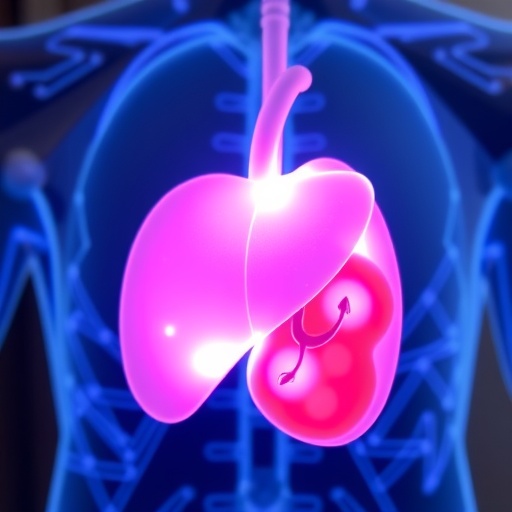In the field of organ transplantation, advancements in techniques are vital for improving graft viability and patient outcomes. A recent study has highlighted the significance of hypothermic machine perfusion in the preservation of liver allografts, marking a pivotal development in transplant medicine. As we delve into the intricate details of this state-of-the-art approach, it becomes evident that hypothermic machine perfusion not only enhances the viability of transplanted livers but also addresses the critical concerns related to organ preservation.
Hypothermic machine perfusion involves the continuous circulation of a cold preservation solution through the liver allograft, significantly lowering its temperature while simultaneously providing essential nutrients and oxygen. This innovative technique contrasts sharply with traditional static cold storage methods, which have long been the gold standard in organ preservation. Utilizing this machine perfusion technique, researchers have reported improved outcomes in both short and long-term graft function following transplantation, paving the way for its wider adoption in clinical practice.
In their extensive review, Xynogala and colleagues meticulously explore the various metabolic processes that occur during hypothermic preservation. They discuss how the reduction in temperature slows down cellular metabolism, thereby reducing the depletion of glycogen stores and inhibiting the production of harmful metabolites. This metabolic advantage is crucial, as it ensures that the liver remains in optimal condition throughout the preservation period, allowing for better recovery following transplantation.
The research team also delves into the biochemical aspects of the hypothermic perfusion solution used during the process. Typically composed of various electrolytes, antioxidants, and nutrients, this solution is meticulously formulated to maintain cellular integrity. The examination of these components reveals their critical roles in protecting hepatocytes during cold storage. The presence of such protective agents in the perfusion solution helps mitigate the effects of cold ischemia, a phenomenon that has been linked to poor graft outcomes in liver transplantation.
Importantly, Xynogala et al. emphasize the reproducibility of results obtained through hypothermic machine perfusion. In preclinical studies and early clinical trials, the technique has consistently demonstrated lower rates of primary non-function, a significant risk that can jeopardize transplant success. Additionally, the researchers provide evidence showing that hospitals equipped with this technology experience a notable reduction in the incidence of delayed graft function, a complication often associated with traditional preservation methods.
The team’s comprehensive analysis also highlights stage-specific changes that occur during liver perfusion. For instance, they investigate how perfusion parameters, such as flow rates and pressure, influence cellular responses during the preservation phase. This sort of detailed exploration is invaluable for future studies aiming to optimize machine perfusion protocols for liver allografts.
The influence of temperature on the preservation process cannot be overstated. As discussed in the review, maintaining a consistent hypothermic environment throughout the perfusion period is crucial for cellular preservation. The technology behind machine perfusion systems allows for precise temperature control, ensuring that the liver remains within the desired thermal range and thus safeguarding its bioenergetic status. This ability to maintain stable conditions over an extended period represents a significant advancement in organ preservation technology.
Another compelling aspect of the study involves the implications of hypothermic machine perfusion for organ allocation. By extending the safe preservation period of livers, this technique potentially allows for organs to be transported over longer distances, thus addressing the critical issue of geography in transplant availability. In regions where donor organs are scarce, hypothermic machine perfusion could play a transformative role in increasing equitable access to liver transplants.
Furthermore, the review contemplates the role of hypothermic machine perfusion in the context of marginal donor livers. In light of the increasing demand for transplantable organs, the ability to utilize livers from donors previously deemed unsuitable represents a significant breakthrough. By optimizing the preservation of such marginal grafts, hypothermic machine perfusion techniques may help to reduce the organ shortage crisis that affects thousands awaiting liver transplants.
As the discussion unfolds, the researchers also provide insights into the future of hypothermic machine perfusion, contemplating how technological developments could further refine this technique. Innovations in perfusion solutions, machine design, and monitoring systems are on the horizon, promising enhanced graft outcomes and bolstering the prospects for wider adoption in clinical settings. The prospect of real-time monitoring during perfusion is particularly enticing, as it would allow transplant teams to adjust parameters dynamically based on real-time data.
Moreover, the integration of artificial intelligence and machine learning into perfusion systems could help optimize treatment protocols tailored to individual patient needs, ushering in an era of personalized medicine in transplantation. Such technological advancements could enhance the overall success rates of liver transplants and improve patient quality of life post-surgery.
As we draw our exploration of this innovative technique to a close, it is clear that hypothermic machine perfusion stands at the forefront of liver transplantation. The evidence presented by Xynogala and others strongly supports its role in enhancing graft viability and efficacy. This study not only encapsulates the current state of research but also highlights future directions for investigation and the promise held by this cutting-edge technology.
In conclusion, the evolution of hypothermic machine perfusion techniques represents a crucial development in liver transplantation. By facilitating improved preservation of liver allografts, this innovative approach promises to enhance both transplant success rates and patient outcomes in the years to come. As research progresses, the hope remains that hypothermic machine perfusion will continue to evolve and redefine the landscape of organ transplantation, making life-saving treatments more accessible to patients in need.
Subject of Research: Hypothermic Machine Perfusion of Liver Allografts
Article Title: Hypothermic Machine Perfusion Of Liver Allografts: State Of The Art
Article References: Xynogala, A., Amin, A., Lunsford, K.E. et al. Hypothermic Machine Perfusion Of Liver Allografts: State Of The Art. Curr Transpl Rep 12, 10 (2025). https://doi.org/10.1007/s40472-025-00467-7
Image Credits: AI Generated
DOI: 10.1007/s40472-025-00467-7
Keywords: Hypothermic machine perfusion, liver allografts, organ transplantation, graft viability, preservation techniques.




